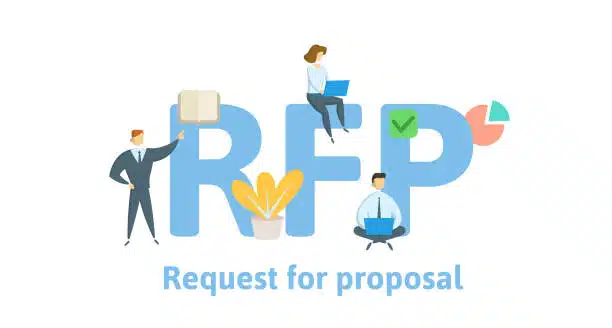

What is an RFP?
A request for proposal (or RFP) is a document or announcement that a business or organization shares with other companies. RFPs concern project funding matters; they’re designed as outlines intended to help guide businesses who may be interested in placing bids to help complete the project in question.
An RFP will include:
- The needs of the project
- A request for proposed solutions from qualified vendors
- An outline of contract terms and the bidding process
- Directions regarding how bids should be formatted
Why Do I Need an RFP?
RFPs are a great way for companies to secure contractors for projects. They’re especially ideal for more complex or lengthy projects. If you’re uncertain of how to manage roadblocks throughout your project on your own, the bidding process will give you a chance to see what different contractors and companies suggest before you pay them to do the work.
If your organization is truly in need of external assistance with completing a project, an RFP may be your best course of action for finding that help. Because creating an RFP requires deep introspection into a company’s overall wellbeing and goals, the project itself, and how your team operates, it can actually be an excellent exercise in company analysis.
Creating an RFP will strengthen your team’s knowledge of their own needs and limitations. Conducting prior research, holding meetings both inside and outside of the company, assembling an RFP team to draft the RFP, and so on are all team-centric activities.
Requests for proposal can tremendously benefit your organization. They:
- Force you to define requirements and goals
- Make comparing systems easier
- Both within the company and externally
- Keeps teams focused on ROI
Secrets to Creating a Great RFP
PLAY GOLDILOCKS WHEN IT COMES TO REQUIREMENTS
If your RFP’s specified requirements are too vague or too restrictive, it could cause your company headache down the line. Vague requests can result in contractors offering incomplete solutions; they’re also misleading, which could lead to inadequate and unsafe work in the future if contractors are planning for (in essence) an entirely different project.
By contrast, RFPs that are too detailed and fail to leave room for flexibility can put a damper on contractors’ creative muscles. You may receive less thoughtful or innovative ideas than if you’d left some space open for creativity.
REMEMBER YOUR PROJECT IS A TEAM EFFORT
If you’re creating an RFP, it’s crucial that you understand you’re drafting the basis of a partnership. Write out questions, restrictions, and goals with this in mind. Challenge yourself to think outside of your own company and colleagues; think hard about how this project could impact whichever business your partner with– what will they gain from it? How will you collaborate with them to ensure you both have the highest chance of success?
PURSUE CLARITY ABOVE ALL ELSE
We’ve already mentioned avoiding leaving out or including too many details in your RFP– but no matter what the gist of your messaging is, it’s crucial that you remain as clear as possible at all times. If you’re truly dedicated to finding the best contractor for your job, the only way to assess them fairly is to provide them with an even playing field.
Each contractor who reads your RFP should take away the same messages. This is impossible if your team fails to craft a clear, concise request. Avoid wordy language, ask as many questions as necessary (no more and no less), and ask third parties who haven’t played a part in the writing process to interpret what they read. You may be shocked by which pieces of your request create hangups.
Recent Articles
Write For Us
Think you’ve got a fresh perspective that will challenge our readers to become better marketers? We’re always looking for authors who can deliver quality articles and blog posts. Hundreds of your peers will read your work, and you will level up in the process.Ready to grow? Say Hello






